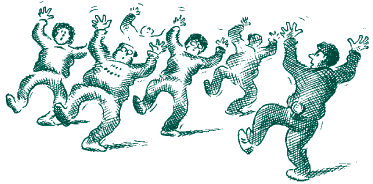 
|
|
The Safe Living Guide
A guide to home safety for seniors |

|
Keeping yourself healthy and active
What does home safety have to do with fitness and food? Plenty! Spending time and energy on your health can provide a big pay-off. You'll not only feel better, you'll be considerably reducing your chances of having a fall or other injury. Here's why:
Benefits of healthy eating
The foods you eat build and maintain your body. With age, your body continues to need essential nutrients to function correctly. Food deficiencies in seniors can cause or increase the risk of bone loss, heart disease, diabetes, arthritis, etc. — all of which increase your risk of falling. Eating Well with Canada's Food Guide (see For more information... to order your copy) provides general guidelines on the foods you need to maintain or improve your health.
Healthy eating promotes a healthy heart, strong bones and good resistance to infection and injury. Eating poorly, skipping meals or not eating enough can cause weakness and dizziness and increase your risk of a fall. That's also why it's so important to eat regular, well-balanced meals every day.
Checklist:
Nutrition
|
|
Yes |
No |
|
 |
Have you checked out Eating Well with Canada's Food Guide to understand your basic nutritional needs? |
 |
 |
|
 |
Do you eat a variety of foods from each food group every day? |
 |
 |
|
 |
Do you often choose whole grain and enriched products? |
 |
 |
|
 |
Do you often choose lower-fat foods and milk products? |
 |
 |
|
 |
Do you select leaner meats, poultry and fish, as well as dried peas, beans and lentils? |
 |
 |
|
 |
Do you eat at regular times? |
 |
 |
Benefits of active living
Remaining physically active also reduces your risk of falling by giving you more flexible joints, stronger bones and muscles, better heart and lung function, more energy, less fatigue, better sleep, and less anxiety and depression. Being active includes everyday activities such as walking, climbing stairs, gardening and shopping, as well as exercise classes and recreational activities like swimming, golfing and Tai Chi. Whatever your current physical condition, you can engage in some form of physical activity with the help of your doctor.
Canada's Physical Activity Guide to Healthy Active Living for Older Adults (see For more information... to order a copy) explains why physical activity is important for seniors. It offers tips and easy ways to increase your level of activity, improve your health and prevent and manage diseases.
Checklist:
Physical activity
|
|
Yes |
No |
|
 |
Have you checked out Canada's Physical Activity Guide to Healthy Active Living for Older Adults? |
 |
 |
|
 |
Have you had a check-up recently and talked to your doctor about increasing your physical activity? |
 |
 |
|
 |
Do you make sure you have regular and appropriate physical activity that stimulates your muscles and heart? |
 |
 |
|
 |
Do you choose physical activity whenever you can (walk instead of taking the car, use the stairs instead of the elevator)? |
 |
 |
There's no time like the present. Even when physical activity starts in later life, it can lead to significant improvements in your health and quality of life. Choose activities that will build your endurance, increase your flexibility and improve your strength and balance. Remember to check with your doctor first and to start slowly.

Eleanor's story
In Eleanor Mills' opinion, "it's absolutely never too late" to start exercising. When she was 68 years old, Eleanor was almost bedridden and "barely able to teeter across a room." When she was 81 years old, however, she was leading 5 km walks in cities across the country.
Eleanor had advanced osteoporosis, a disease in which the bones become so thin and brittle that they break easily. In time, several of her vertebrae collapsed, and three years later she suffered further fractures. "With the pain and agony and the lack of activity — because I could hardly do anything at all — I went down to 46% bone density. I really began to feel like a  china cup walking around, because it really is about half the strength you should have." china cup walking around, because it really is about half the strength you should have."
Eleanor knew that one of the best ways to improve her condition was to be active. She started challenging herself to walk a little bit each day. "I was in terribly bad shape," she says. "I only kept going because I knew that if you keep still, you lose more bone than ever. It goes much faster." Through exercise, good nutrition and medical treatment, Eleanor eventually increased her bone density by 20%.
A turning point came when Eleanor first tried a walker. "I simply flew along, and I said to myself, ‘Gee, I could walk to Vancouver with this.' " It was Eleanor's idea to form what was called the "Boney Express," a series of walks to raise money for, and awareness of, osteoporosis.
Eleanor admits that when she first used the walker, she felt a little strange and wondered what people would think. "There are many people who have resisted getting a walker because it sort of labelled them as unable. And I did feel a little odd pushing around what seemed like an empty chair, because my walker has a seat. But that is so much offset by the value of the walker, that I very soon got over it. I think we should welcome all the aids we can find, and we must be proud that we can do so much more when we use them."
One of Eleanor's goals is to try walking for the whole day. As she puts it, "I just want to see how far I can go." |

[Previous] [Table of Contents] [Next]
|



